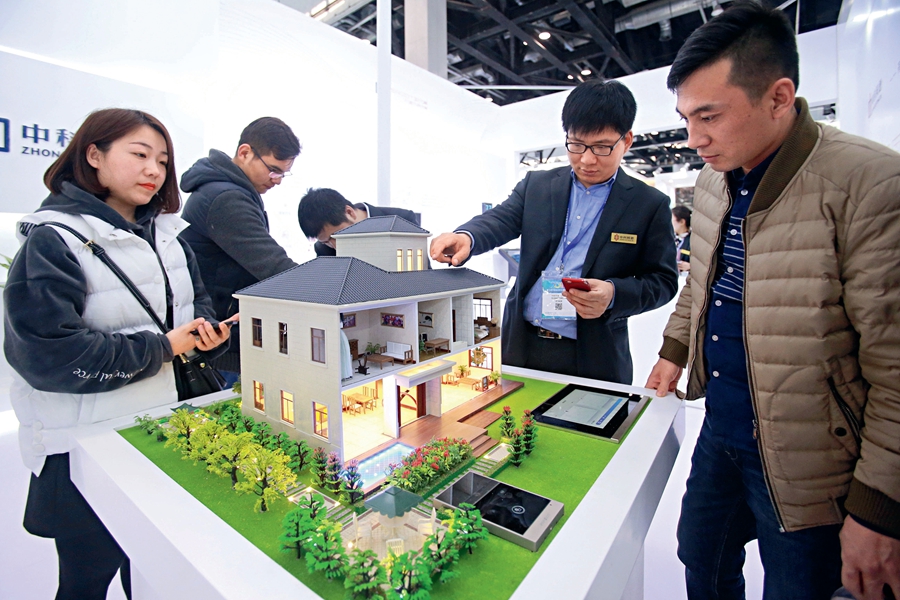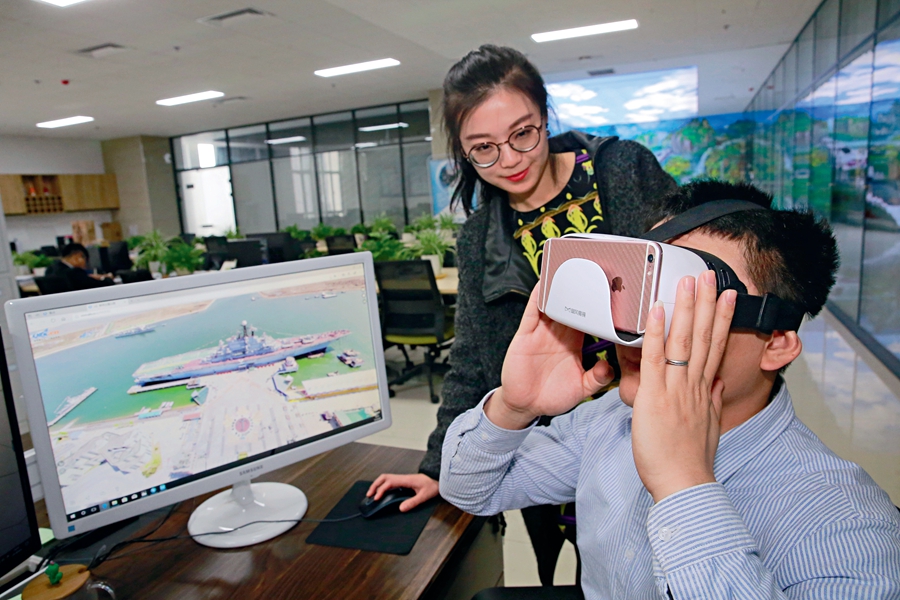From smart cities to cities of the future
China Today,May 18, 2018 Adjust font size:
As China stands on the cusp of transitioning from a fast developing nation to a modernized, developed nation and benchmark of modern progress, the rate of urbanization has accelerated to unprecedented levels. In 1950, just 13 percent of the population of China lived in cities, rising to 45 percent in 2010, 57.4 percent by the end of 2016 and projected to be at 60 percent by 2030. That amounts to over 700 to 800 million people living in urban environments. Urbanization is reshaping the physical environment as well as the cultural fabric of society, and has a massive impact on the economy.
Traditional models of urbanization are outdated and unsustainable for populations this size and a waste of resources as well as extremely detrimental to the environment compared to the advancement in tech and renewable energy over the decades. Currently, the only way to imagine the cities of the future is through what is referred to as smart cities in the contemporary jargon.
 The third China International Intelligent Building Exhibition opens in Beijing in March 2018.
The third China International Intelligent Building Exhibition opens in Beijing in March 2018.
The British Standards Institute (BSI) defines the term as “the effective integration of physical, digital and human systems in the built environment to deliver sustainable, prosperous and inclusive future for its citizens.” Tech companies view it from another context altogether. IBM defines a smart city as “one that makes optimal use of all the interconnected information available today to better understand and control its operations and optimize the use of limited resources.” From the perspective of citizens and inhabitants, a smart city can be seen as a habitable space that has all the core functionality of a city integrated into and enhanced by technology. Furthermore, it also sees green standards and sustainability also integrated into the mix.
Why a buzzword is poised to become a ubiquitous standard of assessment of life in modern developed cities is due to a plethora of factors and reasons. Cities are the core engines of growth for all modern societies. They are places where large talent pools, attracted by opportunities and facilities, aggregate, the best resources allocated, and facilities made accessible.
The model of modern urban life revolved around the technological, demographic, and infrastructural needs of mid-20th century life. This notion of modern life was predominantly dependent upon an abundance and easy availability of fossil fuels. This led to excess and waste prone development that has proven to be disastrous, both environmentally and geopolitically. However, in recent years, a combination of interesting events happened at the same time. Due to the meteoric rise of smart phones, cellular broadband, and low power, high efficiency embedded computing, everything from business to human social life has changed irrevocably. The parameters of what constitute a smart city have also changed with this.
With the combination of Internet of Things (IoT), cloud computing, big data, machine learning, and AI, cities are no longer static masses of steel, concrete and asphalt, antiquated solutions to problems that few foresaw when they emerged; but instead they have the potential to be highly efficient, safe, well designed, people and climate friendly habitats of humanity.
 A customer tries VR goggles on to take a virtual tour of Tianjin City.
A customer tries VR goggles on to take a virtual tour of Tianjin City.
Some key features that define a smart city now are factors such as efficient design, maximization of green spaces, minimization of traffic choke points and congestion, sustainability of infrastructure and buildings, in-depth monitoring of every data point that can be obtained through sensors to enable optimal safety, and effective access to facilities with minimal wastage.
What is being envisioned now are well designed living spaces that are built around efficiency and a design philosophy of comfortable human habitation, with technology integrated into every facet from design to construction, monitoring functionality, and maintenance. Entire urban areas are built to maximize green areas and ensure the smoothest flow of traffic. With technology integrated into every aspect from street lights to traffic lights, from thermostats to smoke detectors, it is possible to tweak operation to the minutest detail.
For instance, if a fire breaks out in a building, not only can the inhabitants be immediately alerted through their smart phones, but they can also be directed to the nearest exits and safe spaces. Furthermore, the awareness of the incident will be instantaneously conveyed throughout the system, and thus not just the building’s safety measures be implemented intelligently themselves, but emergency search and rescue services can be dispatched within a moment’s notice. On top of that, the path for them through traffic can be cleared and an optimal route be provided through monitoring traffic flow and analysis from data obtained from sensors all over the city. In addition, regular traffic can be routed through alternate routes to ensure that life in the surrounding area is disrupted to a minimum. Ambulances can transfer the injured to hospitals more quickly as well.
The possibilities for similar improvements and enhancements across all aspects of urban as well as rural life are immense. Both tangible and intangible improvements to quality of life are not just within grasp, but the need of the hour as many large cities are becoming unmanageable behemoths.
The goal is to rid cities of the traditional scourges that befall them and to create living spaces where the inhabitants feel safe, comfortable, and productive without unnecessary or undesirable hurdles and unsustainable costs.
China’s southern city of Shenzhen has already taken the first trial to build a smart city, taking lessons learned from its phenomenal success. The next step on that development trajectory is the massive Jing-Jin-Ji (namely Beijing-Tianjin-Hebei) urban cluster to offload some burden from Beijing and to streamline many aspects of urban life in a future-oriented design.
To that end, Chinese tech giants such as Tencent, Alibaba, Xiaomi, Huawei and ZTE are investing billions and competing ferociously to design and define the standards of the future, from 5G technology to the IoT. The stakes are raised even higher as due to economies of scale, winner takes all and will impact not just China, but also the world.
All this will be invaluable for the next stage of the Belt and Road Initiative as well, since the development in the coming years and decades will be modeled on the results achieved now. China has risen to the enormous challenge and taken the lead in the development of modern cities and urban spaces that will be shared with the world later.
The smart cities being envisioned now are meant to be the platforms from which humanity can live lives bereft of the trials and tribulations of claustrophobic concrete jungles, whiling away lives ensnared in traffic jams or bundled into mass transit like herds of sheep while inhaling toxic fumes, scared of every unfamiliar face. Change of that scale and impact will not be seen overnight, nor is it as glamorous as some technological innovations and buzzwords sound, but it is critical because it defines and shapes the way we live our lives and shapes our future. It is time to retire the novelty aspect from the term smart cities, and instead for the vision to be referred to as cities of the future.

